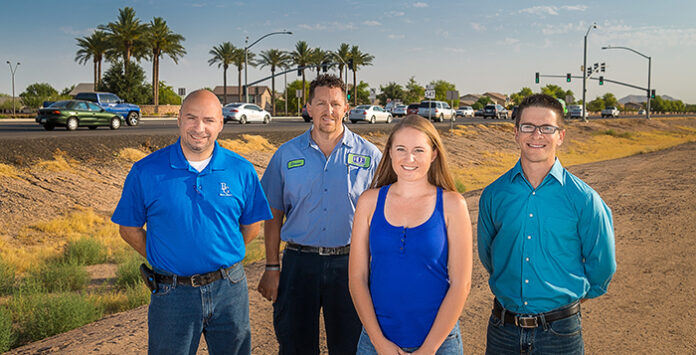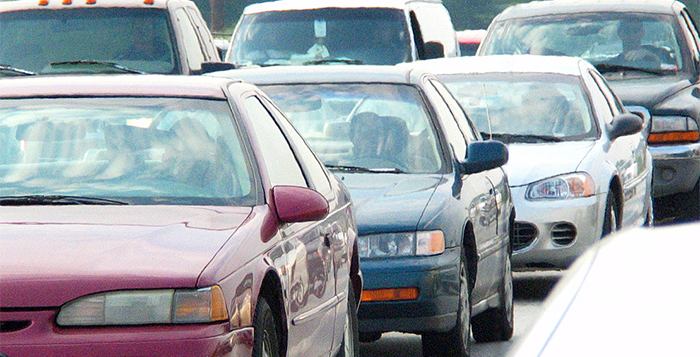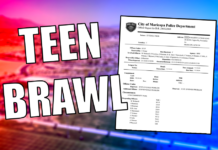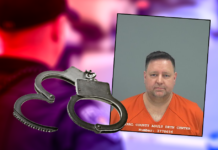
A half-cent sales tax could relieve some of the traffic pressure on State Route 347, if Pinal County voters go for it.
The Board of Supervisors had expected to to place a Regional Transportation Authority (RTA) proposal on the November ballot during its Wednesday meeting. However, according to County Manager Greg Stanley, push-back on the half-cent sales tax has the RTA calling a special meeting for Thursday at 11 a.m. They will consider revising the plan.
The tax would raise approximately $14.6 million annually over the next 20 years for 13 transportation improvement projects around the county.
High on the priority list is adding one lane each direction on the nine-mile stretch of SR 347 from the city of Maricopa to the Maricopa County line.
That is the fourth-most expensive project on the RTA list (see below) at an estimated $28.8 million.
The total estimated funds needed for all projects on the list (see map) and administration and other services is $640 million.
Louis Andersen, the Public Works director for Pinal County, said if voters approve the half-cent sales tax, the county would begin collecting the money on April 1. Some funds could become available at the end of June.
Should the RTA get an affirmative vote, more SR 347 lanes would not be a sure thing for the near future, though that project is included in Phase 1 of implementation.
An important aspect of the project is making sure it does not stop at the county line but continues to the Interstate 10 interchange. That involves coordination with the Maricopa Association of Governments (MAG).
[quote_box_right]For some Maricopa residents, adding lanes is an obvious choice while others aren’t so sure:
Eric Cope has been commuting on SR 347 since 2006. He does not think more lanes will solve the problems and says a tax would be a waste of time. “The biggest issue is that anytime there is an accident, they shut down the whole road. If there are three lanes, they’ll shut down three lanes instead of two. What they need is to add a secondary route and pave a couple of the Indian roads – that would be ideal.”
Jessica Massa started commuting two years ago to Chandler, and was unprepared for the drive-time Maricopa traffic. “Some days, it’s not that bad, and sometimes it takes and hour to an hour and a half. If there’s an accident it’s more like two hours. I think adding the lanes will be a big help.”
Julio Torres has been commuting to the East Valley since 2008. “When you have a lot of folks who are in a rush and don’t allow enough time to get to work, it’s a challenge.” The proposed sales tax, he said, won’t be much help. “What would help is another route out of town, if we had our own version of the 101, the 202 or the 303 to downtown Phoenix.”
Stuart Myers has been commuting for eight years and said the traffic experience depends on the time of day. “If you’re drive between 5:45 and 6 in the morning, it takes half an hour to get to the airport. If you leave at 6:10, it takes 45 minutes to an hour. Drivers have no regard for anything; it’s just a race to a red light.” He said added lanes would not hurt, but other solutions are needed as well. “If Riggs Road was four lanes, I think that could help, too. And we need better outlets, as well. It’s never going to be one-and-done. We need long-term solutions.”[/quote_box_right]
“There are hurdles to get over before it becomes a project,” said Eric Anderson, the transportation director for MAG.
What has stopped initiation of improvements to the roadway up to this point has been lack of a funding source. If that is secured through a citizens’ vote in Pinal County, the project could be added to MAG’s Regional Transportation Plan, Anderson said.
“Then we have to make sure it meets our air-quality standards,” he said. “There are steps to go through.”
That includes government studies.
“We have worked with MAG, had discussions with them, and they have tentatively agreed to conduct a study to determine what are the best options for achieving our goal to reduce the drive time from Maricopa to I-10,” Maricopa City Manager Gregory Rose said.
Rose said the city and MAG are looking for processes to assure any improvements in Pinal County extend to the I-10 interchange in Maricopa County.
“We’ve already started the process of engaging stakeholders along that corridor,” Rose said.
The idea of adding lanes to SR 347 also has to pass through Arizona Department of Transportation (ADOT), which is responsible for the roadway, and Gila River Indian Community, which owns the land.
“If Gila River says no, the discussion is over at that point,” Anderson said.
The ADOT process can be a major hurdle by itself, if state or federal funds are needed for the project.
“The Arizona Department of Transportation is supportive of any community or local agency that has identified additional transportation revenue to complete projects that are needed,” spokesman Dustin Krugel said. “In order for any project to move forward (that is funded partially or completely with state funds), it would need to be added to ADOT’s Five-Year Transportation Facilities Construction Program, which serves as a blueprint for future projects and designates how much local, state and federal funding is allocated for those projects.”
SR 347 is not on that five-year program. To become part of that plan, a project has to go through layers of review and (if federal funds are involved) the National Environmental Policy Act (NEPA) process, with public and stakeholder outreach. NEPA can take 2-3 years, Kruegel said.
If the SR 347 project is able to avoid using federal funds, at least one layer of review can be removed.
One of MAG’s goals is to have people working closer to where they live. That means boosting economic development and drawing employers to places like Maricopa. Anderson said that is the most efficient way of solving commuter traffic problems.
In current conditions, additional lanes seem the likely solution to traffic-flow problems. “It certainly needs it, given the amount of traffic,” Anderson said.
“I believe everyone is in agreement that it’s a reasonable goal to try to reduce the drive time,” Rose said.
Meanwhile, the RTA still needs to get on the ballot. “By statute, the board has to have that resolution to forward for the General Election by the 11th of July,” Stanley said.

Pinal County RTA Projects Considered for Half-Cent Sales Tax
Project Mileage Cost
• New North-South Corridor from Apache Junction to Coolidge 36 miles $345.6 million
• New State Route 24 Parkway from Meridian Road to N-S Corridor 5 miles $48 million
• Casa Grande Connector additional lanes from Henness to N-S Corridor 14 miles $44.8 million
• State Route 347 additional lanes from Maricopa to county line 9 miles $28.8 million
• Selma Highway road construction from Casa Grande to Coolidge 16 miles $25.6 million.
• Montgomery Road additional lanes from I-8 to M-CG Highway 8 miles $25.6 million.
• I-10 traffic interchange at Kleck and Korston roads 0.5 mile $15 million.
• Thornton Road additional lanes from SR 84 to I-8 3.5 miles $11.2 million.
• Burris Road additional lanes from SR 84 to Alamo Road 1.5 miles $4.8 million.
• West Pinal Freeway Right of Way from I-8 to county line 28 miles $4.2 million.
• Peters Road additional lanes from Burris to Thornton 1 mile $3.2 million.
• Saddlebrook new road 1 mile $2.5 million
• N-S Corridor Right of Way from Korsten/Kleck to I-10 15 miles $2.2 million.
• Public Transportation – Park & Ride lots, Dial-A-Ride $28.2 million
• Municipal local projects $24 million
• Contingency $20.3 million
• Administrative costs $6 million
This is an updated version of a story that ran in the July issue of InMaricopa.




![Elena Trails releases home renderings An image of one of 56 elevation renderings submitted to Maricopa's planning department for the Elena Trails subdivison. The developer plans to construct 14 different floor plans, with four elevation styles per plan. [City of Maricopa]](https://www.inmaricopa.com/wp-content/uploads/2024/04/city-041724-elena-trails-rendering-218x150.jpg)

![Affordable apartments planned near ‘Restaurant Row’ A blue square highlights the area of the proposed affordable housing development and "Restaurant Row" sitting south of city hall and the Maricopa Police Department. Preliminary architectural drawings were not yet available. [City of Maricopa]](https://www.inmaricopa.com/wp-content/uploads/2024/04/041724-affordable-housing-project-restaurant-row-218x150.jpg)










![Elena Trails releases home renderings An image of one of 56 elevation renderings submitted to Maricopa's planning department for the Elena Trails subdivison. The developer plans to construct 14 different floor plans, with four elevation styles per plan. [City of Maricopa]](https://www.inmaricopa.com/wp-content/uploads/2024/04/city-041724-elena-trails-rendering-100x70.jpg)
Great idea have three lanes until just after Riggs heading north and then have it go back to 2 lanes. What could go wrong.